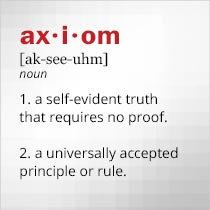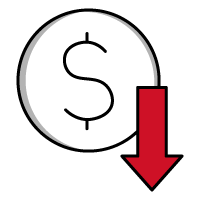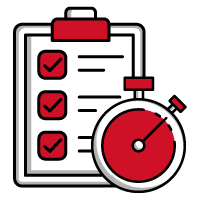Getting Your Lab Equipment Back Up And Running
June 05, 2020
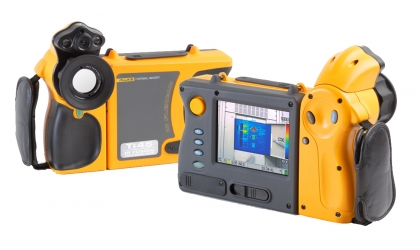 |
Getting Ready to Start Those Tests
Electronic test equipment is designed to deliver meaningful data concerning a device under test (DUT), and most users assume they are achieving excellent accuracy when they power up their instruments. But what if the test instruments have been sitting on a shelf for some time (not unusual during this time of the COVID-19 coronavirus pandemic)? Can those instruments be expected to deliver the same levels of performance as instruments that are powered for use day after day and perform regular measurement routines? Or should test instruments that are being returned to regular use after considerable “downtime” be prepared in any way for handling a regular workload once again? This blog post offers steps or precautions that should be taken with instruments that have been idle to ensure that they can provide the most accurate measurements possible.
Warm-up Time
Some instruments, such as digital multimeters (DMMs), are designed for general-purpose, portable use and meant to be turned on and off as needed. There is no “warm-up” time required. Similarly, portable analysis instruments such as spectrum analyzers and digital storage oscilloscopes (DSOs) are designed to be used shortly after being powered up and under a wide range of operating conditions, such as operating temperature and relative humidity (RH).
The same is not true, however, for benchtop test instruments, such as signal or waveform generators or vector network analyzers (VNAs) running on AC power. They provide the most consistent performance after a certain amount of warm-up time and once reaching a certain ambient temperature, surrounded by a nominal environmental temperature of about +25°C or room temperature. The warm-up time may be only one-half to one hour or even an amount of time specified in the owner’s manual. But without suitable warm-up time, a benchtop test instrument may not provide the accuracy or repeatability specified in the owner’s manual.
Follow Operating Temperature Guidelines
Similarly, high-quality test instruments are designed not to exceed a certain operating or ambient temperature as typically specified within the operating temperature range for a particular instrument, which can vary depending upon whether an instrument has been developed for commercial, industrial, or military measurement applications. An instrument, such as a signal generator, that can overheat or to operate more than its maximum operating temperature, will typically suffer variations in amplitude versus frequency far beyond its normal specified limits. The Fluke TI45FT-20 Thermal Imager with its large detector and wide temperature display (-2 to +600°C) is a useful tool for checking the operating temperature of test equipment as well as their surroundings.
Things to Check
A test instrument that has been sitting without power even for a reasonably long length of time should perform within specified limits when turned on and power is applied. But caution is always advised when turning on equipment that represents a major investment and may be vital to the research and production of the company. Whether an instrument is operating properly may not be clear until measurements are performed on a known DUT, such as a reference standard, but some things about the instrument can be learned during the power-up process.
Evaluate the display screen
For instruments with display screens, such as spectrum analyzers and oscilloscopes, a malfunctioning display screen can degrade the value of even accurate measurements by rendering them visually unreadable, although still available as valid data within an automatic-test-equipment (ATE) system and computer network. The display screen is one part of the test equipment that can be checked for proper operation during power on. For the liquid crystal display (LCD) screens used in most signal or spectrum analyzers, a row or column of dark pixels is an indication of a faulty display. An LCD screen is typically qualified for proper operation by the number of pixels that are dark or stuck on one color as a percentage of the display’s whole number of pixels, such as 0.1% or 1%.
Check the battery life
Even for portable test instruments built to be turned on and off as needed, operating with minimal warmup time, preventative maintenance can help deliver better measurements. As an example, the MOHR CT100B is a battery-powered time-domain reflectometer (TDR) for in-field or benchtop testing of RF/microwave and digital coaxial cables. It can de-embed components, such as connectors, as part of the measurements and can provide scattering-parameter (S-parameter) data (for S11 and S21 parameters) for its measurements. A simple precaution for this instrument before turning it on is to know the condition of its power source, a rechargeable NiMH battery with a typical run time of 6 h for the TDR. Although the TDR has a built-in charger for the battery, it is of little use in the field if the battery has been almost fully discharged.
Operate within recommended temperature and relative humidity ranges.
Changes in operating temperature during a measurement can result in variations in the instrument’s performance. While environmental conditions for in-field measurements with a portable instrument cannot be controlled, an indoor test environment can be maintained at a temperature as close as possible to room temperature (about +25°C). Most benchtop test instruments are specified for an operating temperature range centered around room temperature, such as 0° to +50°C, and accuracy is degraded when measurements are performed outside that operating temperature range.
The lowest relative humidity (RH) is usually recommended whenever possible for accurate measurements. Test instruments are typically specified for use across RH ranges as wide as 10% to 80% or 90% RH at an operating temperature range, although the RH can be easily controlled indoors. Such is not always the case for outdoor measurements although it may be possible to control the RH around the test instrument. For a portable DSO, for example, this would involve maintaining the test instrument within a sealed enclosure with only the test probes needed for making the connections to the DUT outside the sealed enclosure.
Factors such as relative humidity and temperature can affect measurement accuracy in many ways for different measurements. For example, the Rohde & Schwarz RTO2000 series of digital oscilloscopes features models with 16-b vertical resolution and standard bandwidths to 4 GHz (that can be extended to 6 GHz). This is a virtual measurement system within a single compact enclosure, with integrated waveform generator and FFT-based spectrum analysis. It provides over 90 built-in measurement functions and shows results on a 12.1-in. high-resolution capacitive touch screen (Fig. 1).
Similarly, the Keysight / Agilent E8364B is a versatile VNA with built-in source and analyzer and frequency range of 10 MHz to 50 GHz. It achieves extremely high accuracy through advanced signal processing and correction techniques, but accuracy is specified for fully calibrated operation and within a relatively narrow operating temperature range of +23° ± 3°C. For a complex instrument such as this, with multiple measurement functions, calibration is critical to measurement accuracy.
Is Calibration up to date?
But how is it possible to know that this (or any other) VNA is calibrated, especially if it has been sitting on a shelf unpowered for a while? Fortunately, the Keysight / Agilent N4693A Electronic Calibration (ECal) calibration modules for characterizing the magnitude and phase with frequency of two- and four-port VNAs. These modules provide precisely known test signals from 10 MHz to 67 GHz compliant to widely accepted standards such as ISO 17025 and ANSI Z540. With such a module, even RF/microwave VNAs that have been sitting for a while can be checked for the accuracy of their measurements.
Calibration is often a concern for a complex instrument, such as a VNA, that has been sitting for a while. Fortunately, most instrument manufacturers offer fast-turnaround calibration services, returning documentation of measurements performed on an instrument as required for its calibration. Axiom Test Equipment offers full calibration and repair services with fast turnaround times to help users ensure that an instrument will perform as expected after it has been turned on, even after some “off” time.
For most companies, test equipment represents a significant investment. Tracking and managing test equipment can determine how efficiently the equipment is used, including tracking and managing the calibration and repair histories for each measurement tool. By having a good idea of the repair and calibration cycles, the availability of the equipment will be known, and these instruments can be used as cost-effectively and efficiently as possible.
What test equipment do you need to check your instruments as you get back into the lab? Or what equipment do you need to rent to get back into your projects? Let us know what you need - request a quick quote or get help sourcing the right unit.
For more information, contact Axiom Test Equipment’s sales department at sales@axiomtest.com, or by calling an Axiom sales representative at 760-806-6600.
Back to BLOG


